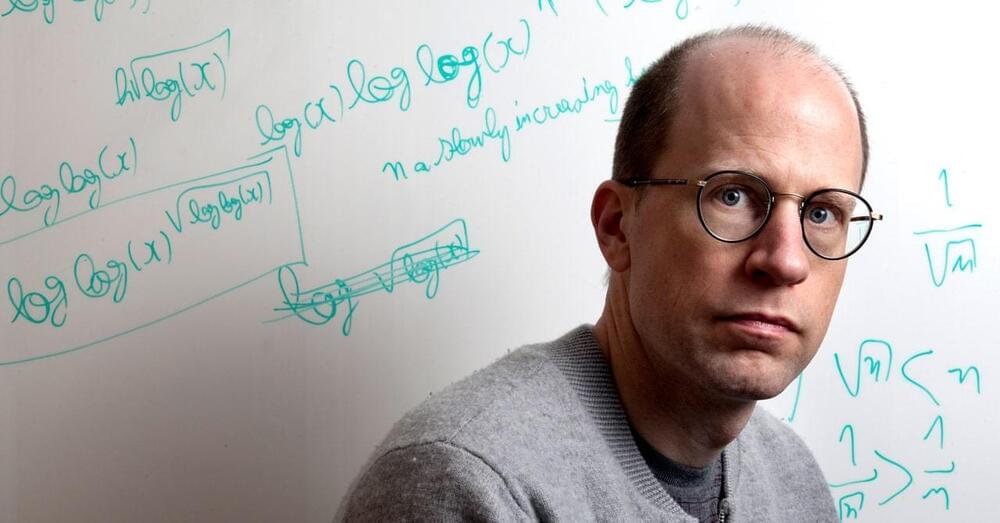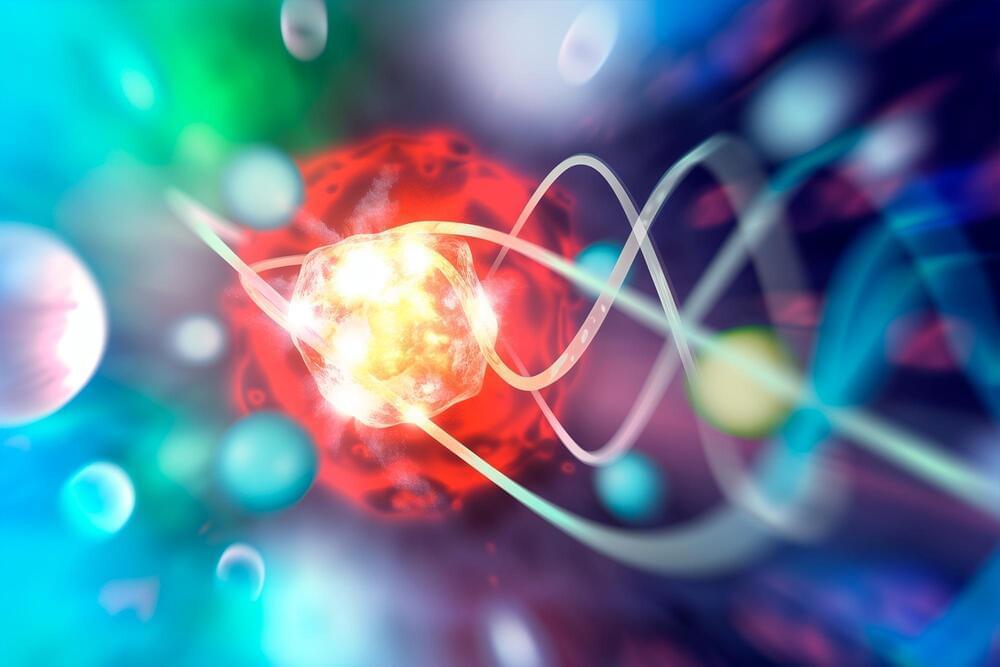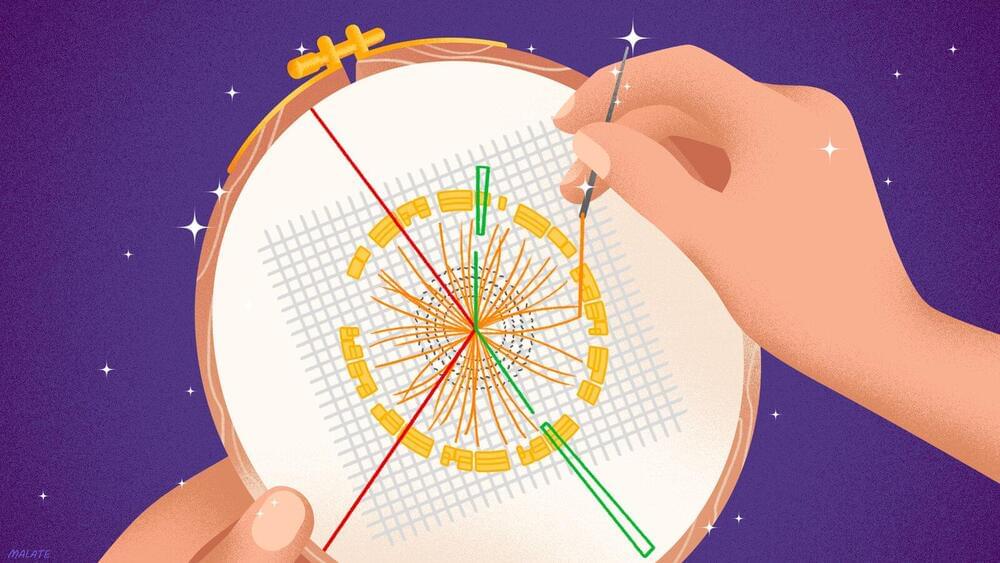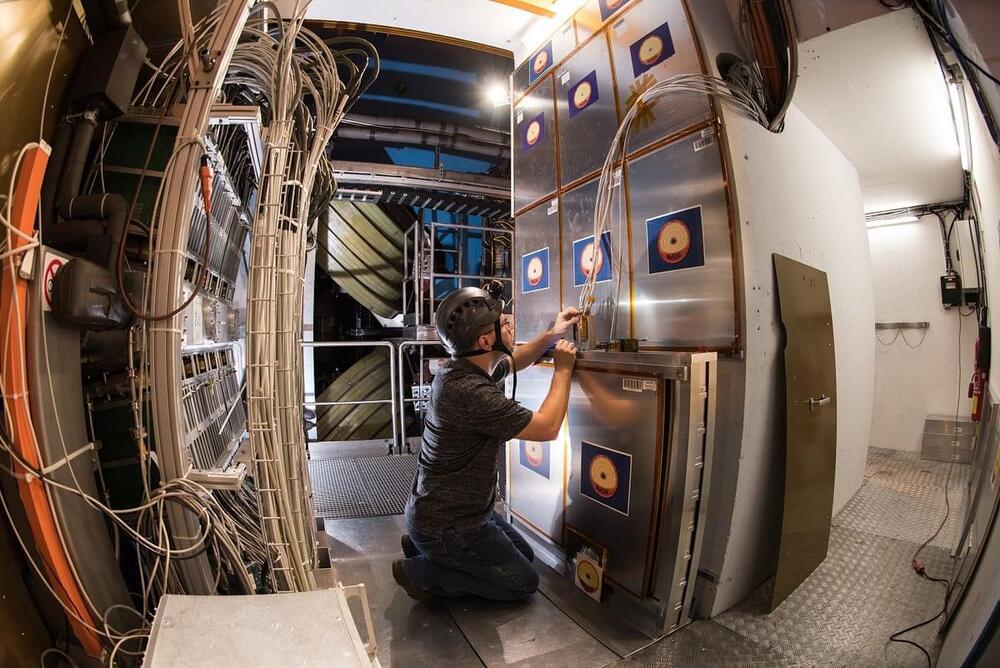Philosopher Nick Bostrom popularized the idea superintelligent AI could erase humanity. His new book imagines a world in which algorithms have solved every problem.



Northrop Grumman and Umbra have been awarded small contracts by the Defense Advanced Research Projects Agency (DARPA) to continue to the second phase of a program designed to collect data from radar-equipped satellites flying in formation and develop innovative algorithms to process the data for military applications.
Umbra’s contract under the Distributed Radar Image Foundation Technology (DRIFT) program is for $6 million and will last for six months and Northrop Grumman’s is for $2 million and covers one year, a DARPA spokesperson said.

Scientists have introduced a groundbreaking form of quantum entanglement known as frequency-domain photon number-path entanglement. This leap in quantum physics involves an innovative tool called a frequency beam splitter, which has the unique ability to alter the frequency of individual photons with a 50% success rate.
For years, the scientific community has delved into spatial-domain photon number-path entanglement, a key player in the realms of quantum metrology and information science. This concept involves photons arranged in a special pattern, known as NOON states, where they’re either all in one pathway or another, enabling groundbreaking applications like super-resolution imaging that surpasses traditional limits, the enhancement of quantum sensors, and the development of quantum computing algorithms designed for tasks requiring exceptional phase sensitivity.
In a new paper published in Light Science & Application, a team of scientists, led by Professor Heedeuk Shin from Department of Physics, Pohang University of Science and Technology, Korea, have developed an entangled states in the frequency domain, a concept akin to spatial-domain NOON states but with a significant twist: instead of photons being divided between two paths, they’re distributed between two frequencies. This advancement has led to the successful creation of a two-photon NOON state within a single-mode fiber, showcasing an ability to perform two-photon interference with double the resolution of its single-photon counterpart, indicating remarkable stability and potential for future applications.

Sepsis is a condition in which the body responds improperly. More specifically, the infection causes the organs in the body to shut down. This is a serious illness which could lead to extremely low blood pressure or septic shock. In this case, permanent damage to the lungs, kidneys, liver, and other organs can occur. Unfortunately, if the damage is extensive enough, it could be fatal. Common symptoms associated with sepsis includes alteration of mental status, shallow breathing, sweating out of context, lightheadedness, chills, and other symptoms associated with infection or fever. Sepsis can lead to septic shock and raises the risk of death. Symptoms of septic shock include inability to stand, sleepiness, and extreme confusion. Interestingly, symptoms can vary between people, and it is important to monitor bodily changes to detect sepsis as early as possible. Bacterial, viral, or fungal infections can lead to sepsis including common infections such as pneumonia, urinary tract infections, and burns, among others. It is critical to see a doctor if you suspect you are not getting better or if your symptoms worsen. Early detection of sepsis can help improve survival rate and prevent permanent organ damage. Treatments include antibiotics, increased fluids, vasopressors to increase blood pressure, and steroids. Although scientists and physicians have worked to understand sepsis and how to treat it, other discoveries are yet to be made.
A recent study in Nature Immunology by Dr. Antoine Roquilly from Nantes University in France, demonstrated that patients that experienced sepsis build strong immune cells that aid in the prevention of tumor development. It was previously unknown how the immune landscape was shaped after a patient recovered from sepsis. Roquilly and his team wanted to understand the relationship between these exposed immune cells and the risk of developing cancer in the future.
Roquilly’s research team first analyzed big datasets that consisted of information from patients who survived sepsis. Researchers were able to determine the risk of cancer prevalence up to 10 years following the discharge from the hospital for sepsis patients. Interestingly, sepsis survivors had lower risk of developing cancer compared to those that did not have sepsis.

The open CMS detector during the second long shutdown of CERN’s accelerator complex. (Image: CERN) When we look at ourselves in a mirror, we see a virtual twin, identical in every detail except with left and right inverted. In particle physics, a transformation in which charge–parity (CP) symmetry is respected swaps a particle with the mirror image of its antimatter particle, which has opposite properties such as electric charge. The physical laws that govern nature don’t respect CP symmetry, however. If they did, the Universe would contain equal amounts of matter and antimatter, as it is believed to have done just after the Big Bang. To explain the large imbalance between matter and antimatter seen in the present-day Universe, CP symmetry has to be violated to a great extent. The Standard Model of particle physics can account for some CP violation, but it is not sufficient to explain the present-day matter–antimatter imbalance, prompting researchers to explore CP violation in all its known and unknown manifestations. One way CP violation can manifest itself is in the “mixing” of electrically neutral mesons such as the strange beauty meson, which is composed of a strange quark and a bottom antiquark. These mesons can travel macroscopic distances in the Large Hadron Collider (LHC) detectors before decaying into lighter particles, and during this journey they can turn into their corresponding antimesons and back. This phenomenon, called meson mixing, could be different for a meson turning into an antimeson versus an antimeson turning into a meson, generating CP violation. To see if that’s the case, researchers need to count how many mesons or antimesons survive a certain duration before decaying, and then repeat the measurement for a given range of durations. To do so, they have to separate mesons from antimesons, a task called flavour tagging. This task is crucial to pinning down CP violation in meson mixing and in the interference between meson mixing and decay. At a seminar held recently at CERN, the CMS collaboration at the LHC reported the first evidence of CP violation in the decay of the strange beauty meson into a pair of muons and a pair of electrically charged kaons. By deploying a new flavour-tagging algorithm on a sample of about 500 000 decays of the strange beauty meson into a pair of muons and a pair of charged kaons, collected during Run 2 of the LHC, the CMS collaboration measured with improved precision the parameter that determines CP violation in the interference between this meson’s mixing and decay. If this parameter is zero, CP symmetry is respected. The new flavour-tagging algorithm is based on a cutting-edge artificial intelligence (AI) technique called a graph neural network, which performs accurate flavour tagging by gathering information from the particles surrounding the strange beauty meson and those being produced alongside it. The collaboration then combined the result with its previous measurement of the parameter based on data from Run 1 of the LHC. The combined result is different from zero and is consistent with the Standard Model prediction and with previous measurements from CMS and the ATLAS and LHCb experiments. Notably, the combined result is comparable in precision to the world’s most precise measurement of the parameter, obtained by LHCb, a detector specifically designed to perform measurements of this kind. Moreover, the result has a statistical significance that crosses the conventional “3 sigma” threshold, providing the first evidence of CP violation in the decay of the strange beauty meson into a pair of muons and a pair of charged kaons. The result marks a milestone in CMS’s studies of CP violation. Thanks to AI, CMS has pushed the boundary of what its detector can achieve in the exploration of this fundamental matter–antimatter asymmetry. Find out more on the CMS website.

Theoretical physicists employ their imaginations and their deep understanding of mathematics to decipher the underlying laws of the universe that govern particles, forces and everything in between. More and more often, theorists are doing that work with the help of machine learning.
As might be expected, the group of theorists using machine learning includes people classified as “computational” theorists. But it also includes “formal” theorists, the people interested in the self-consistency of theoretical frameworks, like string theory or quantum gravity. And it includes “phenomenologists,” the theorists who sit next to experimentalists, hypothesizing about new particles or interactions that could be tested by experiments; analyzing the data the experiments collect; and using results to construct new models and dream up how to test them experimentally.
In all areas of theory, machine-learning algorithms are speeding up processes, performing previously impossible calculations, and even causing theorists to rethink the way theoretical physics research is done.

ARMONK, N.Y., April 30, 2024 — Today, IBM (NYSE: IBM) has announced an agreement with RIKEN, a Japanese national research laboratory, to deploy IBM’s next-generation quantum computer architecture and best-performing quantum processor at the RIKEN Center for Computational Science in Kobe, Japan. It will be the only instance of a quantum computer co-located with the supercomputer Fugaku.
This agreement was executed as part of RIKEN’s existing project, supported by funding from the New Energy and Industrial Technology Development Organization (NEDO), an organization under Japan’s Ministry of Economy, Trade and Industry (METI)’s “Development of Integrated Utilization Technology for Quantum and Supercomputers” as part of the “Project for Research and Development of Enhanced Infrastructures for Post 5G Information and Communications Systems.” RIKEN has dedicated use of an IBM Quantum System Two architecture for the purpose of implementation of its project. Under the project RIKEN and its co-PI SoftBank Corp., with its collaborators, University of Tokyo, and Osaka University, aim to demonstrate the advantages of such hybrid computational platforms for deployment as services in the future post-5G era, based on the vision of advancing science and business in Japan.
In addition to the project, IBM will work to develop the software stack dedicated to generating and executing integrated quantum-classical workflows in a heterogeneous quantum-HPC hybrid computing environment. These new capabilities will be geared towards delivering improvements in algorithm quality and execution times.

More information and choice may be welcomed by some consumers, however, for many others, they’re having to increase the time and effort needed to cut through the noise to decide on what to buy, so much so, they abandon the shopping basket completely.
The data backs this up. In the last three months of 2023, Accenture research found that just under three quarters (73%) of consumers reported being inundated by too much choice, and 75% reported feeling bombarded by advertising. This issue of “information overload” led to a similar number (74%) walking away from purchases because they felt overwhelmed.
It’s easy to see why. The endless number of choices, messages, ads and claims consumers now face, coupled with recommendations from friends, family, influencers, algorithms and apps is only adding to the noise.

A new study proposes modifications to the fundamental equation of quantum mechanics, potentially bridging the gap between these two seemingly contradictory frameworks.

The elegant equations of classical electromagnetism written by James Clark Maxwell in 1861 display a remarkable symmetry between electric and magnetic fields except for their sources. We know about electric charges but we have not found magnetic charges. Bar magnets are dipoles with two poles, north and south, for the magnetic field, resembling the configuration of an electric field sourced by a pair of positive and negative electric charges. However, we had never seen experimental evidence for a magnetic monopole, namely a magnetic charge with only one magnetic pole, a net north or south, from where magnetic field lines emanate, just like the electric field sourced by an electric charge. In a symmetric theory of electromagnetism, magnetic monopoles should exist.
The existence of monopoles with a net magnetic charge was proposed by Paul Dirac in 1931 to explain the quantized (discrete) values of electric charges. Dirac found that magnetic charges should be an integer multiple of a fundamental unit, g_D, equal to the electron charge, e, divided by twice the fine-structure constant, or about 68.5e.
In classical physics, the existence of magnetic monopoles restores symmetry to Maxwell’s equations. But in the broader context of quantum mechanics, Gerard ‘t Hooft and Alexander Polyakov showed in 1974 that magnetic monopoles are required in Grand Unified Theories of the strong, weak and electromagnetic interactions. Since the electric charge is quantized, magnetic charges are unavoidable in these theories. Magnetic charges with the lowest mass must be stable because magnetic charge is conserved and they cannot decay into lower-mass particles.